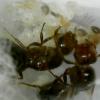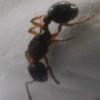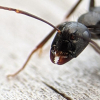That is a seriously hairy ant!
Formacinae and Myrmicinae are both subfamilies of the Formicidae family. All ants are members of the Formicidae family, but can also be split up into subfamilies before their genus. Myrmicinae are more likely to have stingers and have 2 nodes. Formicidae on the other hand are more likely to be stingless and usually spray formic acid rather than stinging, they also only have a one node petiole.
https://en.wikipedia...wiki/Formicinae
https://en.wikipedia...wiki/Myrmicinae
And to actually answer the question you asked. Lasius belongs to the subfamily Formicinae. So it is a type of Formicinae in the same way that Lasius latipes is a member of the Lasius genus. And the same for Solenopsis within the Myrmicinae subfamily.
Oh gosh I broke the italics button.
Edited by BrittonLS, August 4 2015 - 6:14 PM.






















